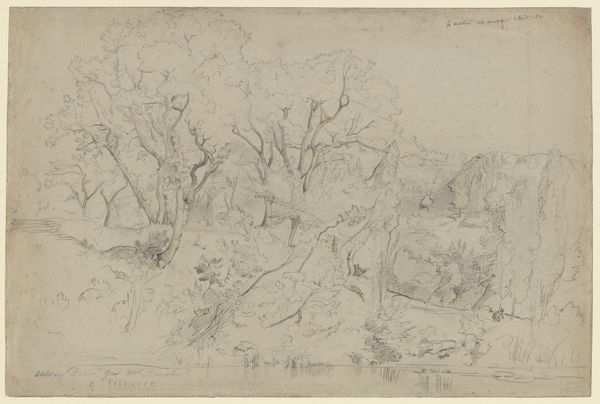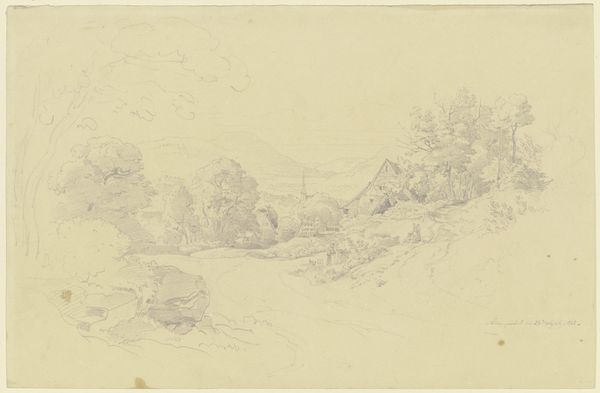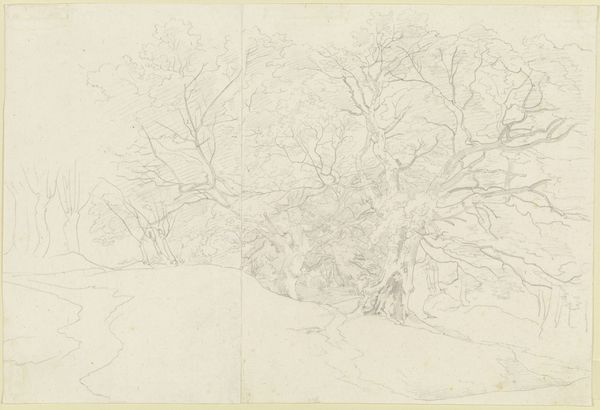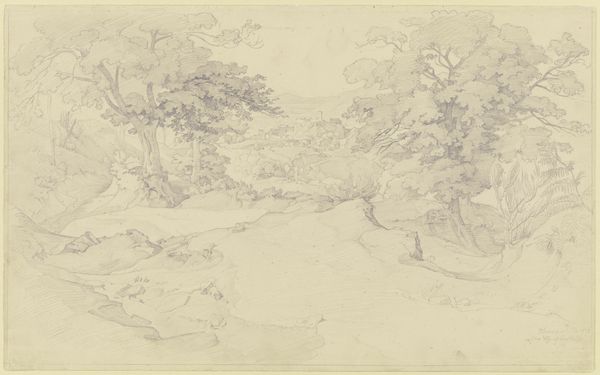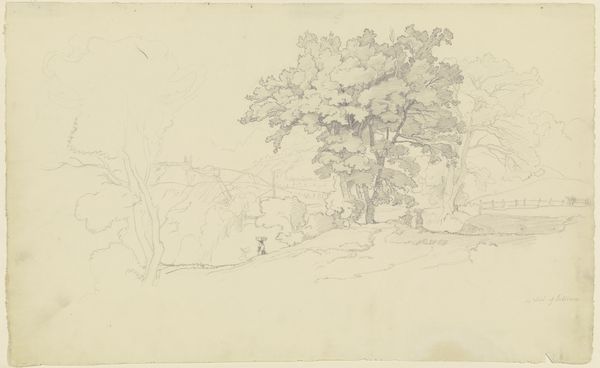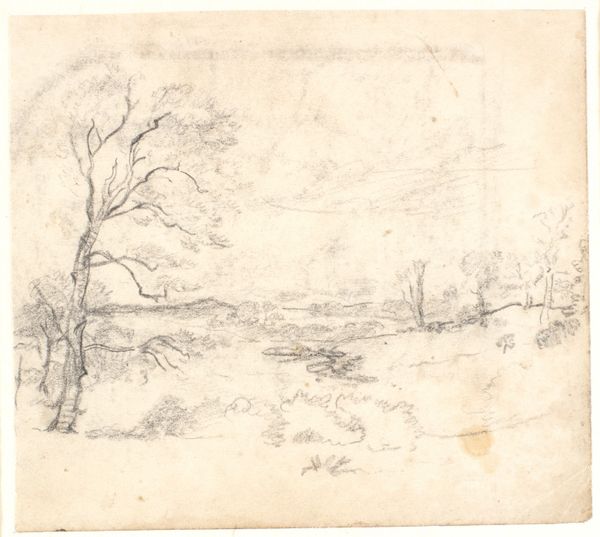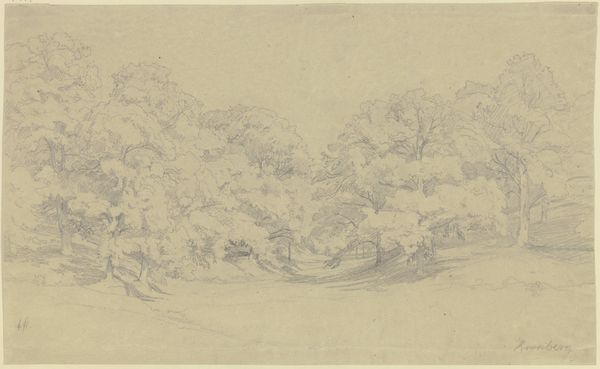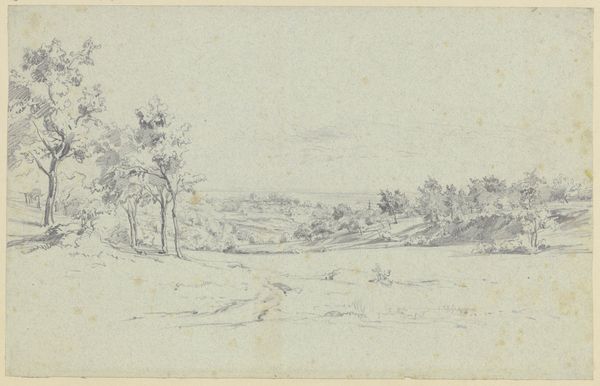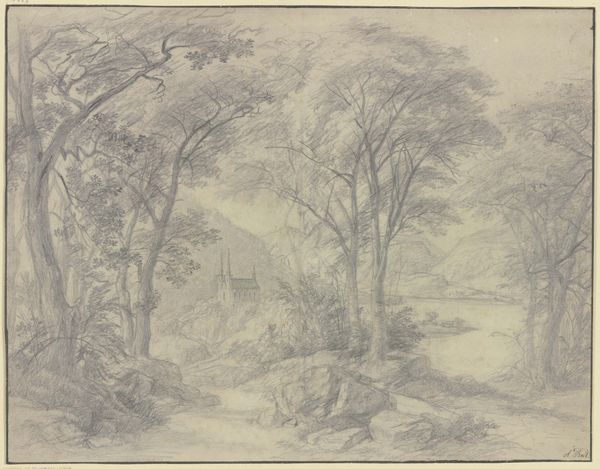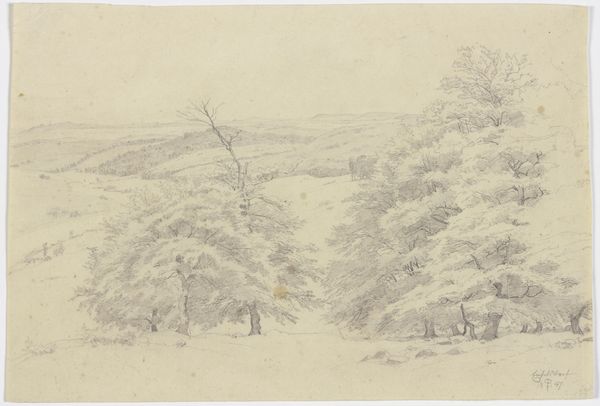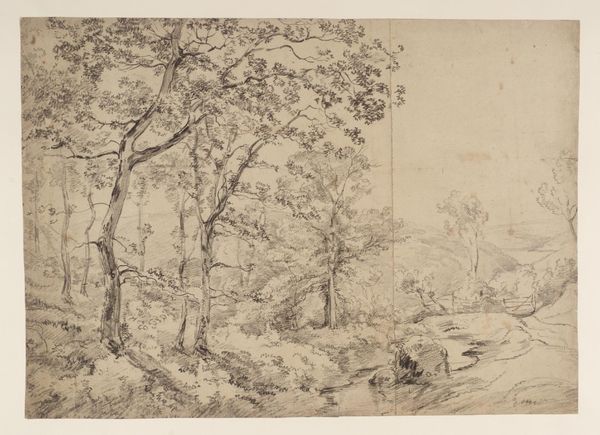
Copyright: Public Domain
Editor: This drawing is titled "Wooded Landscape near Subiaco," created by August Lucas around 1831, using pencil. The detail is amazing, especially considering the medium. I’m drawn to how he's used shading to create depth, but it still feels...unfinished, almost ghostly. What elements stand out to you the most? Curator: Indeed. I observe a deliberate exploitation of tonal gradations. Consider the meticulous cross-hatching, a sophisticated technique used to build form and texture, primarily evident in the trees and the geological formations. Note how Lucas juxtaposes areas of dense shading with expanses of untouched paper. Editor: I see what you mean about the contrast! It's almost like the absence of lines is just as important as the lines themselves in defining the forms. Curator: Precisely. The formal relations are complex: how line weight affects perceived distance, the strategic deployment of detail to guide the viewer’s eye. We might consider how this organization dictates our understanding of space within the composition. Do you see any recurring shapes or patterns? Editor: Now that you mention it, the curves of the hills and the shapes of the trees kind of mirror each other, giving the whole piece a sense of harmony even with all the detail. I suppose that guides my eye, too! Curator: Yes. Ultimately, by understanding the piece as a structured network of forms, textures, and tones, we may achieve a deeper reading beyond its mere representational value. Editor: That's really fascinating! I never considered that so much thought goes into even what looks like a quick sketch. It challenges how I approach art! Curator: Indeed. Analyzing an artwork in terms of its pure form opens new doors for interpretation, enriching one’s viewing experience and scholarly analysis.
Comments
No comments
Be the first to comment and join the conversation on the ultimate creative platform.
